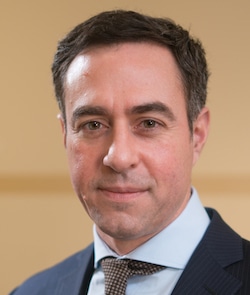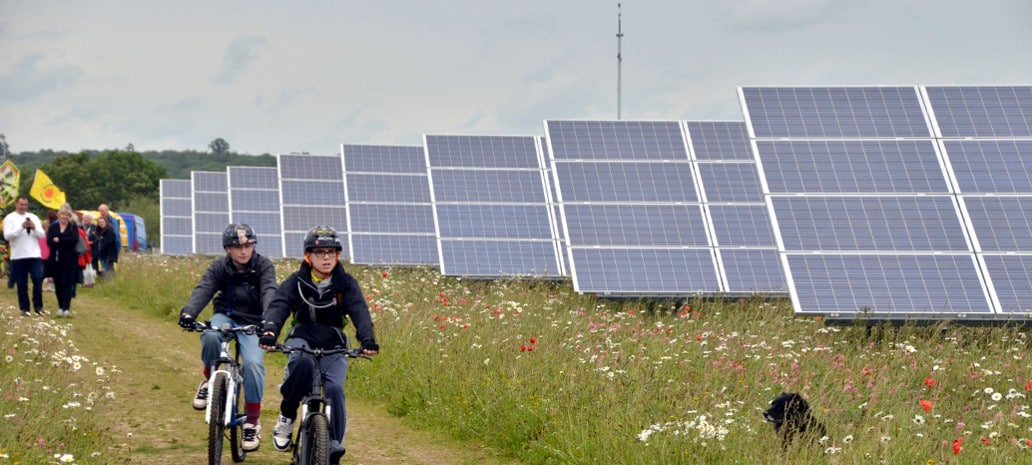 pv magazine: For those of our readers who aren’t familiar with Common Energy, can you tell me a little bit about how the company came about and what it is that Common Energy does?
pv magazine: For those of our readers who aren’t familiar with Common Energy, can you tell me a little bit about how the company came about and what it is that Common Energy does?
Richard Keiser: Common Energy came about when we noticed that many developers did not have the desire or internal capability to acquire and manage residential subscribers for their community solar projects. From an economic perspective the goal of community distributed generation (CDG) is to arbitrage the difference between the commercial electricity rate and a discount off of the residential rate, or in the case of the VDER program a discount to the VDER credit rate.
This gap can be significant and attractive to developers. The challenge lies in the fact that CDG developers are used to off-take arrangements with a single, sophisticated counterparty at a known PPA rate. With CDG, in contrast, there is an average of approximately 170 residential off-takers per megawatt. These off-takers have a wide distribution in their understanding of electricity and the off-take rate is also variable. These different factors require a lot of attention and Common is very good at managing this complexity.
pv magazine: Is this the biggest challenge in putting together community solar project — the customer acquisition angle? And can you take me through the process of acquiring customers for community solar project, and what that looks like?
Keiser: Broadly speaking we sit in one particular part of the project development spectrum which is on the customer acquisition and management side. That said we’re closely involved with developers along the wide range of project activities. As with any large project there are a lot of hurdles to getting a CDG project built and fully subscribed. These vary from permitting to Army Corps of Engineer reviews to utility hurdles and of course the offtake with respect to acquiring subscribers.
With respect to customer acquisition, the two biggest challenges are awareness and motivating action. Community solar is new and many customers simply haven’t heard of it before. So there is an education process and in this regard it would be greatly beneficial for the entire industry if the same state bodies who support CDG legislation would also simultaneously allocate a portion of the funding to support broader public education.
With respect to motivating action, unfortunately there have been a lot of bad actors in the retail energy sector and many members of the public have been burned. When they see a CDG offering which is often structured as a guaranteed discount, they are reticent because the offer seems too good to be true. Motivating action is about education and establishing trust and the best way to do that is by both delivering on your promise to the customer and associating your company with brands that they already know and trust.
pv magazine: So you’ve talked about the motivation of the customer, and you’ve talked about associating the company with brands that they know and recognize. What are some of the other main strategies that community solar developers have for acquiring customers and what do those look like?
Keiser: At present community solar customer acquisition is really an All-Of-The-Above sourcing approach or sourcing strategy. Direct mail, telemarketing partnerships, digital — all of these have a role to play in both educating and motivating action. And so CDG service providers like Common employ all of these strategies as many others do in the industry, and it just depends on the circumstances which one we will emphasize.
In markets where we have a partnership with a known brand then a partnership approach may drive a higher percentage of subscribers. And then if we land in a territory where we have no presence or we’re just getting started, then we may begin with digital and direct mail.
pv magazine: So what are the main advantages of hiring a third-party customer acquisition specialist like Common? And what can you guys do that other community solar service providers can’t?
Keiser: It’s often a more of an issue of matching capabilities. Most developers are experts in acquiring land either directly or through leases, dealing with the permitting process at the town level, securing interconnection rights with utilities, and financing their projects, and by and large these are business-to-business operations.
Most developers have neither the desire nor the internal ability to deal with the general public which is a completely different animal. You need to be very aware of things that just don’t come into play from a developer perspective. So, for example, consumer compliance, having a customer facing brand that is easy to spell and easy to recognize, and having scalable software and a call center to respond to customer questions.
All of these things are new to most commercial and industrial developers and not something that they have the internal skills to build. Then on top of that it makes no economic sense for developers to do this unless they have 200 megawatts or more of community solar. So in markets where community solar program has a high percentage of residential offtake there is a natural alignment between the developer and a customer acquisition and management provider such as Common. And those are the areas where we excel.
One of things that differentiates Common, is that our team has a background in residential solar and has previously managed thousands of residential customer relationships and closed over $100 million in project finance as principals. We understand the challenges that many developers face because we’ve been there and also bring to the table a customer-facing capability that that we’ve developed over the last five to six years.
pv magazine Webinar: Step-by-step process on getting community solar deals done and finding the right financing
pv magazine: Interesting. So do you think this model is going to take off? Do you expect to have more competitors in the customer acquisition space — companies like yours providing services to community solar developers?
Keiser: Yes, absolutely. There will be more companies emerging depending on the markets. A CDG servicer doesn’t need to have national scale to be helpful to a developer, which may have projects localized or concentrated in local areas. There is also a difference between the range of services even within CDG providers like Common. A lot of companies may only provide customer acquisition and in that sense they are passing the customer relationship over to the developer or to another third-party to manage to manage.
The path Common has taken has been really a full-service approach to make it very easy for the developer to both acquire customers and manage the customer on an ongoing basis. This offering is attractive to developers wherever a high percentage of residential offtake is either required by or economically attractive in the program.
For example, if you look at Minnesota, at present Minnesota does not have any particular incentives for a high residential offtake. And if there is no high residential offtake, a commercial developer will just sign up large corporations and a developer may not need any help from Common. If you can just go to Target, and Target headquarters says ‘Okay we’ll take one megawatt, thank you very much.’ you don’t need a community solar servicer to come in and charge you for customer acquisition.
But if there is a high residential component like New York for example where you have a 60% mandated residential and small commercial component then most developers don’t want to do that work themselves. They don’t want to go out to street fairs, give presentations at churches — that type of local-level engagement. And so wherever there is a high residential component then there is a role for a CDG servicer that can help the developer monetize and manage the projects.
pv magazine: Anything else that I didn’t ask that you think is important for our readers to know about Common, the work that you do and what’s going on in the community solar market?
Keiser: One of the things that that differentiates Common Energy is the fact that we have owned and managed solar assets ourselves. And the reason why that’s important is that we have experience dealing with large, billion-dollar institutional banks. And the key to making CDG work as with residential and other solar asset classes is an understanding of the cash flows and the management of those cash flows to benefit the developer and protect the banks.
And so Common’s infrastructure has been developed based on our experience working with national banks. And that’s a key differentiating capability that we feel like we bring to the market. What we also bring to the table, especially as we grow, is the understanding of customer experience. So as we’re educating the public on community solar and trying to bring more people into the market we can make sure that their experience is positive and I think that we’ve been making a lot of effort in that direction.
To clarify this point, let’s say that you’re a CDG servicer and you only provide customer acquisition. Well then the consumer interacts with the customer acquisition provider A and then the relationship gets passed over to the developer B and then financing party C might be involved. And the customer doesn’t know any of these parties because there are no large consumer brands in this space. So it’s not a good experience from a customer perspective. In the case of Common we do the on-boarding and we also are the manager of the customer.
And because we control the entire interaction we’re able to develop and deliver an end-to-end customer experience that’s far superior to if there would be multiple parties and multiple handoffs along the way.
To learn more about the community solar market, register for our webinar with Standard Solar & Common Energy.
This content is protected by copyright and may not be reused. If you want to cooperate with us and would like to reuse some of our content, please contact: editors@pv-magazine.com.









Is this a sponsored post?
No.
Richard and the whole Common Energy team have done an outstanding job in helping to bring community solar into Albany and the Capital Region. The handout material and explanations were solid and the interface with their staff very fluid. They are on the ground and making a difference.